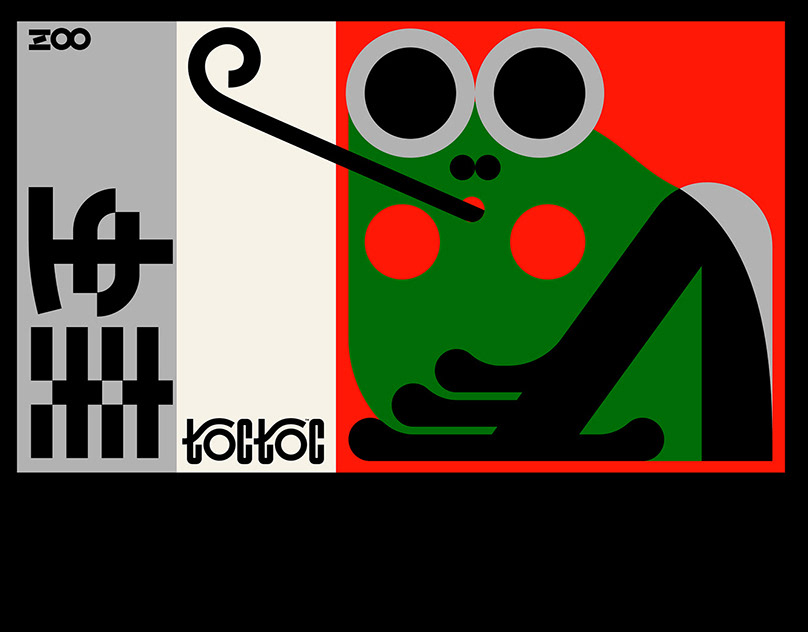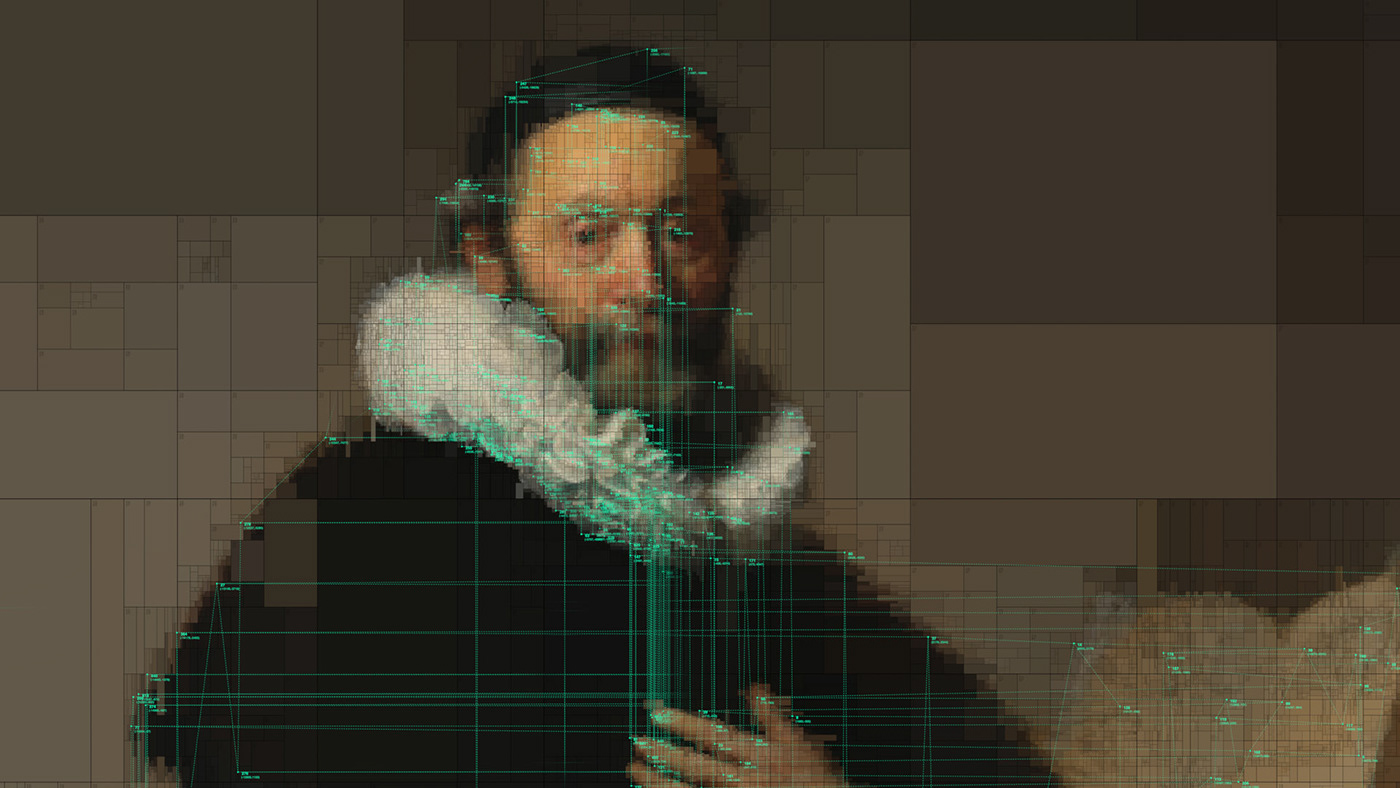
Johannes
I have always been inspired by both the arts and technology, so I wanted to experiment and create a contemporary view of old masters’ paintings. Inspired by information visualisation method called ‘treemapping’, I created an algorithm in Houdini that would do the subdivisions. The algorithm takes the original image, calculates the density of information and then subdivides it, based on a few user-controllable parameters.
The result is a mosaic of rectangles that highlight the subtle changes in the colour palette of the original. The more information there is the on the original, the more it is subdivided and thus the smaller the rectangle elements. The less information, the larger the rectangle area. You could say there is a similarity to the painters’ approach of using broader and finer strokes.
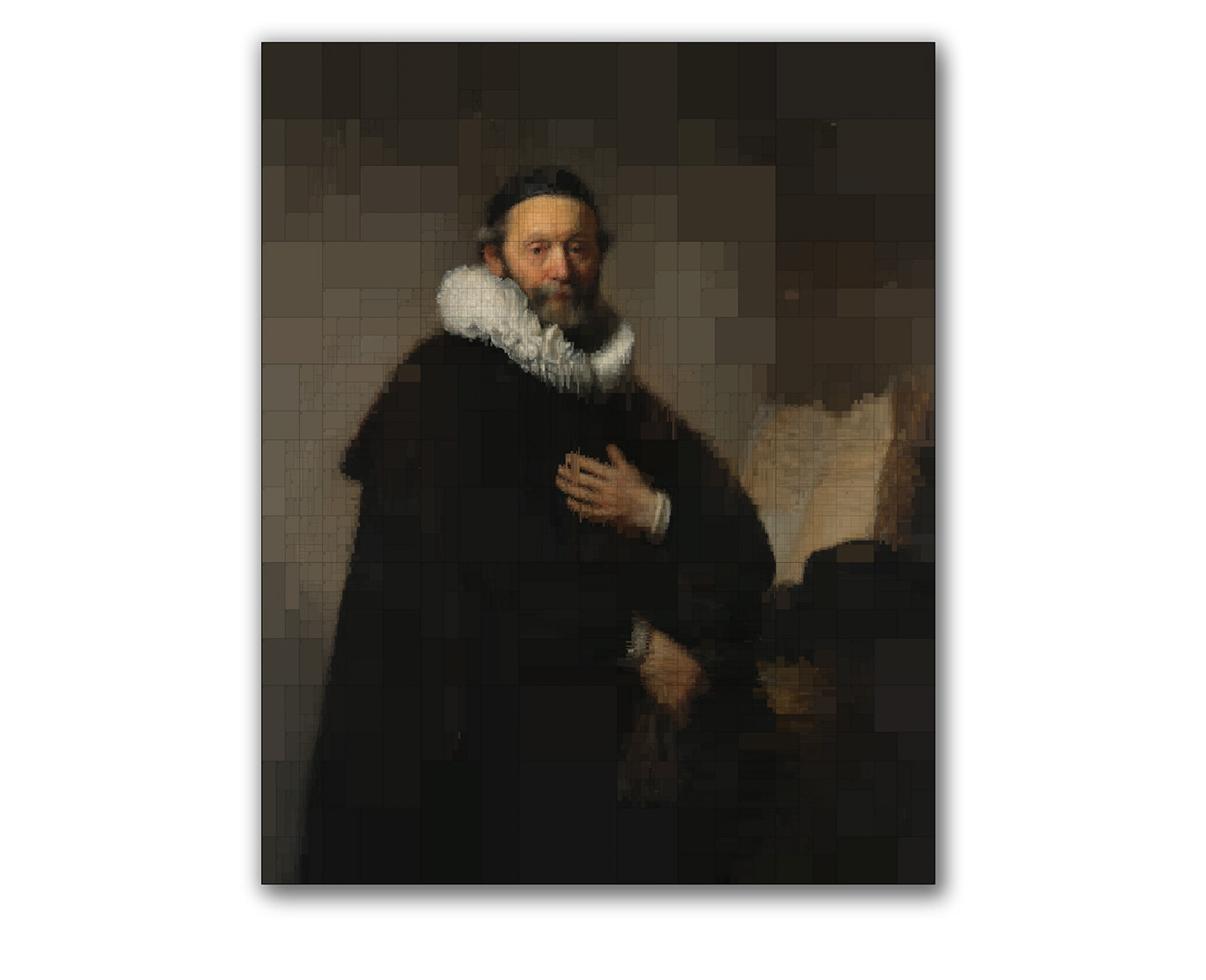
Portrait of Johannes Wtenbogaert by Rembrandt Harmensz van Rijn
1633, oil on canvas, 130 × w 103 cm, Amsterdam Rijksmuseum
In 1633 Rembrandt painted the famous Portrait of Johannes Wtenbogaert (1557-1644). Henk van Os (‘Zien is genoeg’, uitgeverij Balans, Amsterdam, 2005, p. 83-99) writes: “Rembrandt does not elevate you, but he helps makes visible the depth of your feelings and provides consolation”. The face still radiates liveliness, sadness, after a lifetime of turmoil, at the age of 76. It almost speaks to the viewer with an expression of quiet acceptance in the sitter’s intelligent, soft, moist and perhaps wise eyes (Drs. Kees Kaldenbach, art historian).
Details
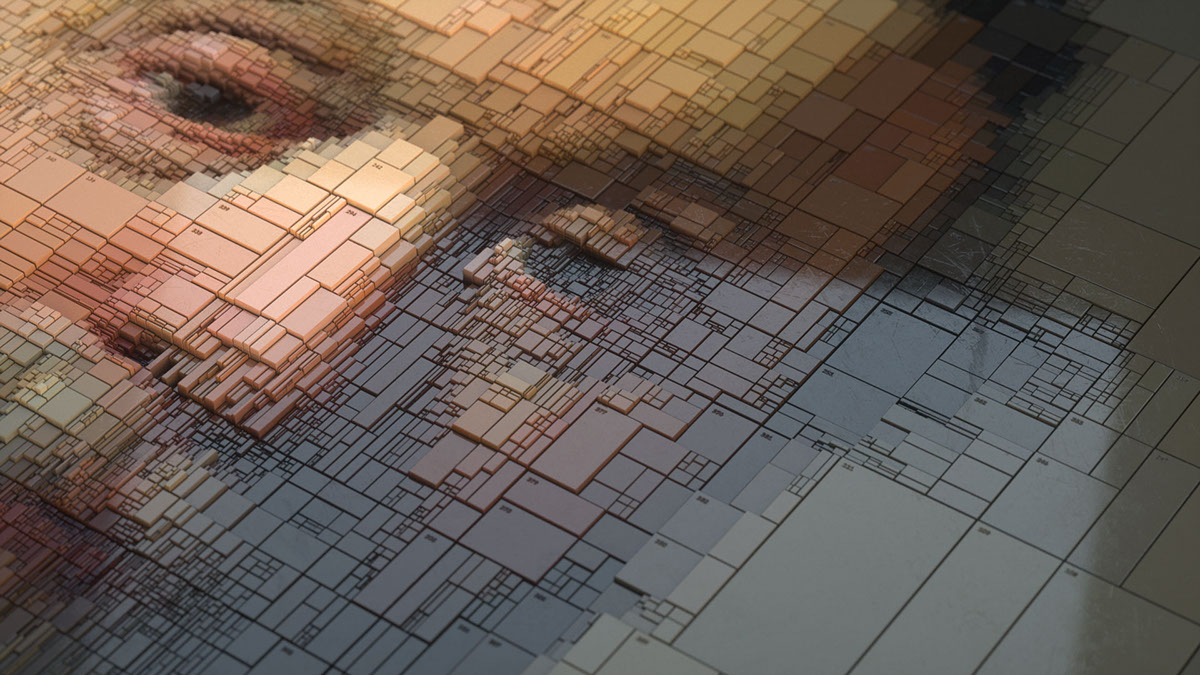
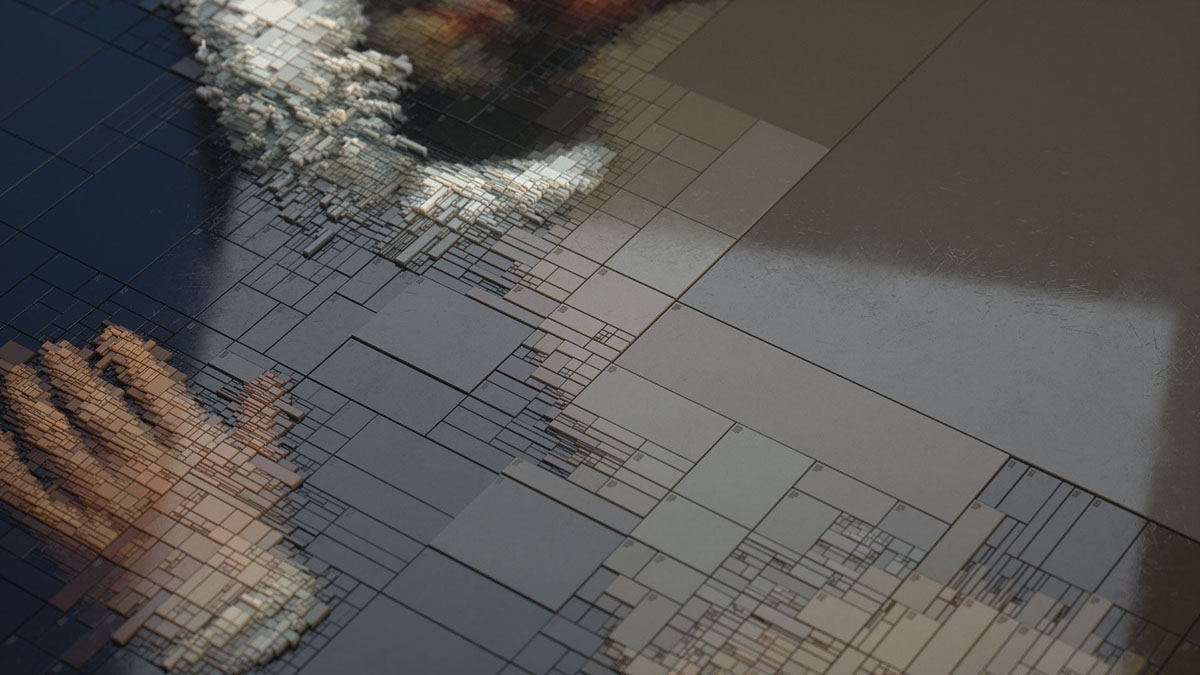
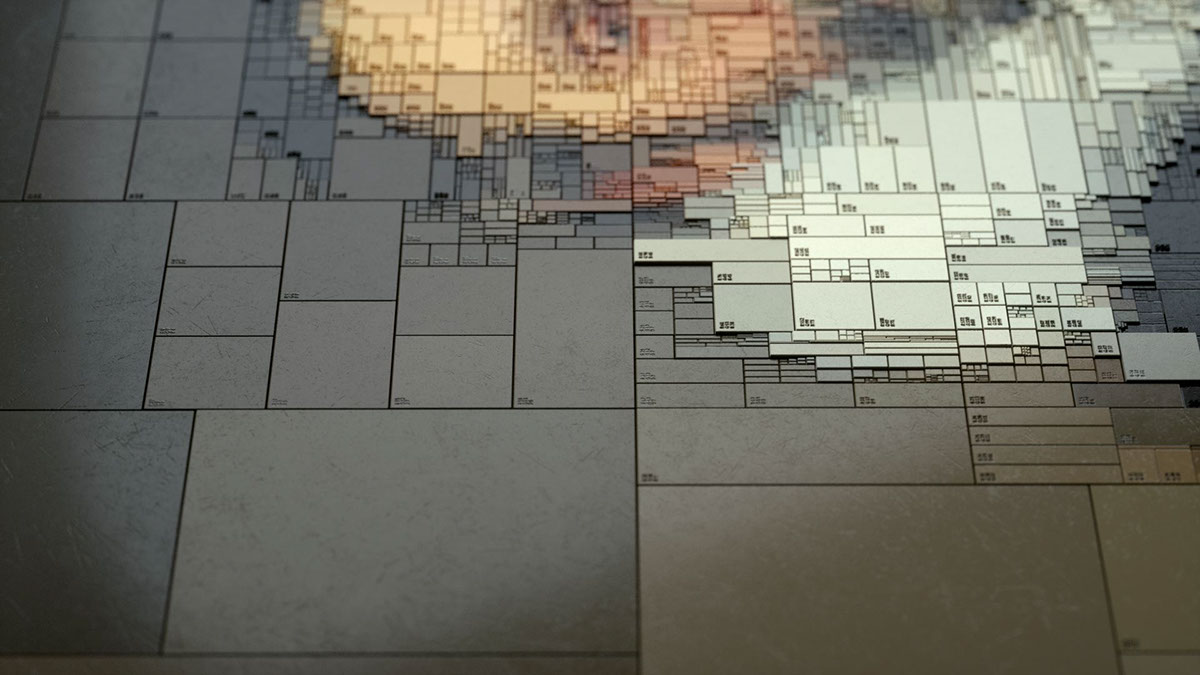

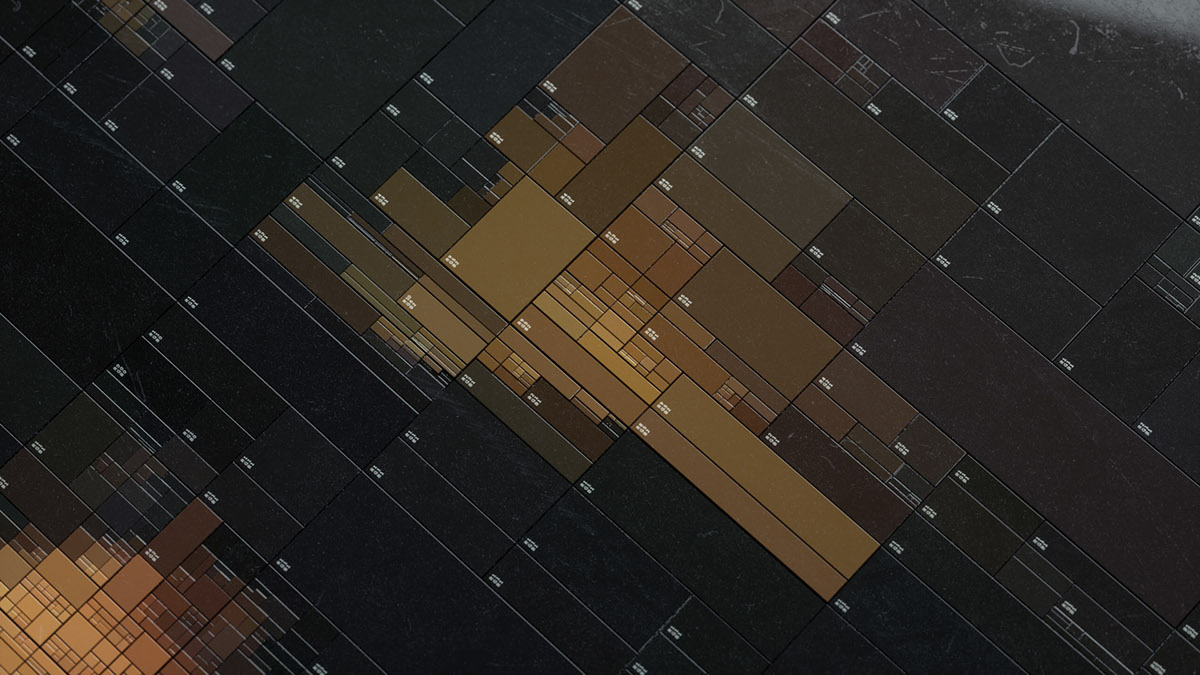
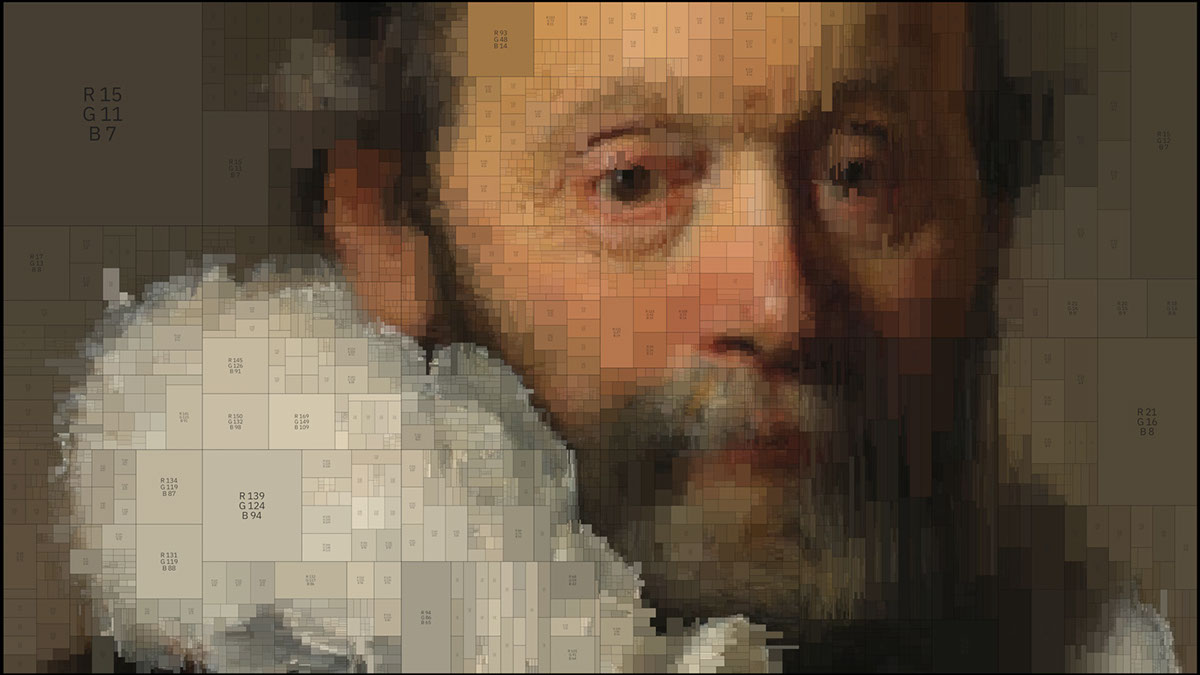
The process
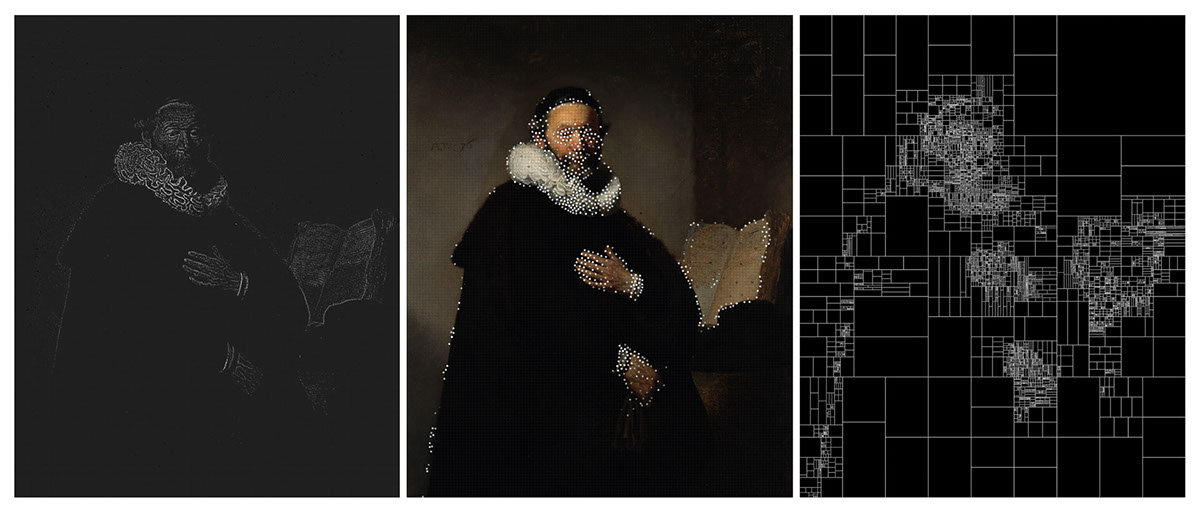

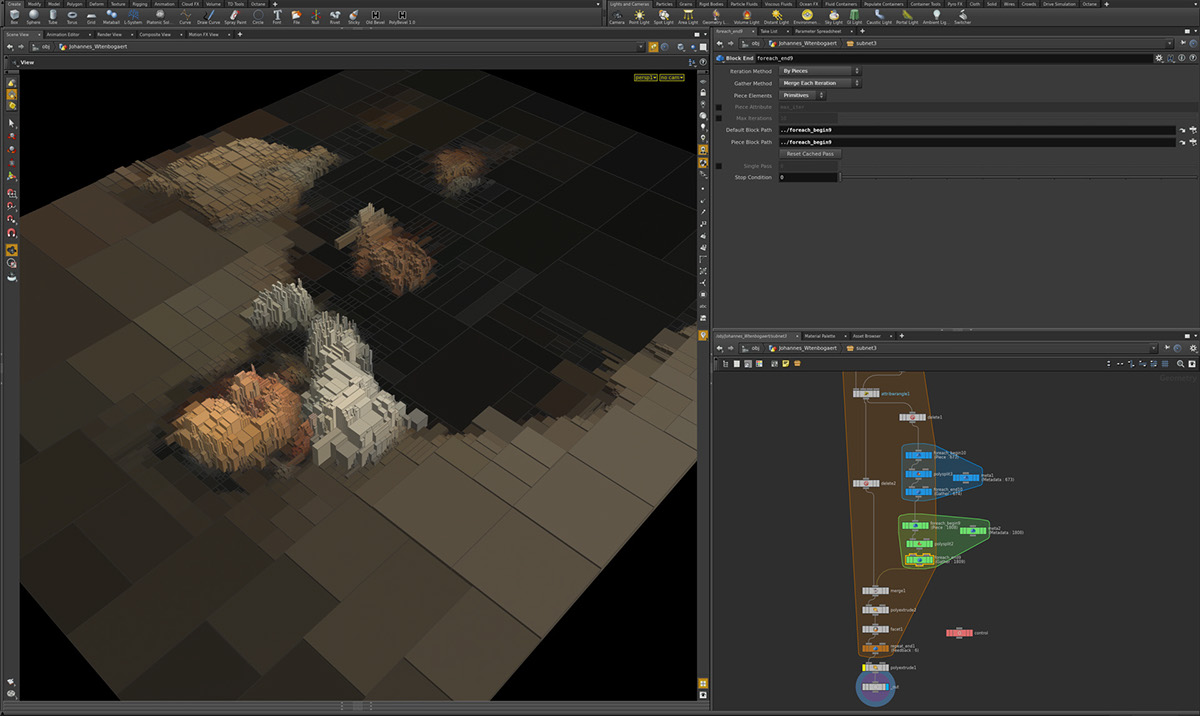

Thank you!



